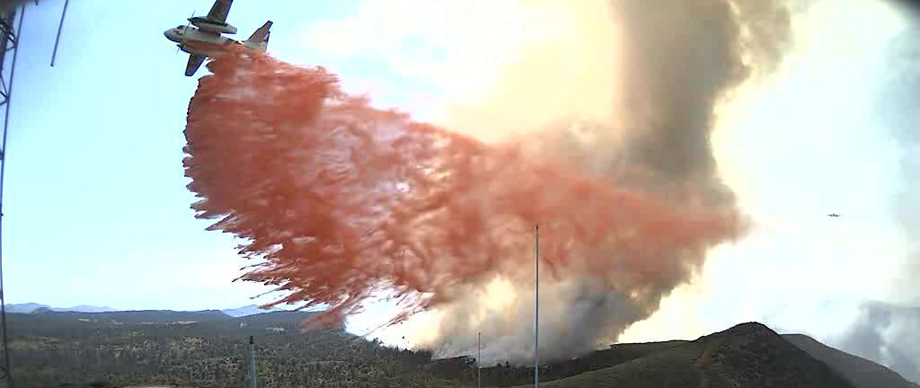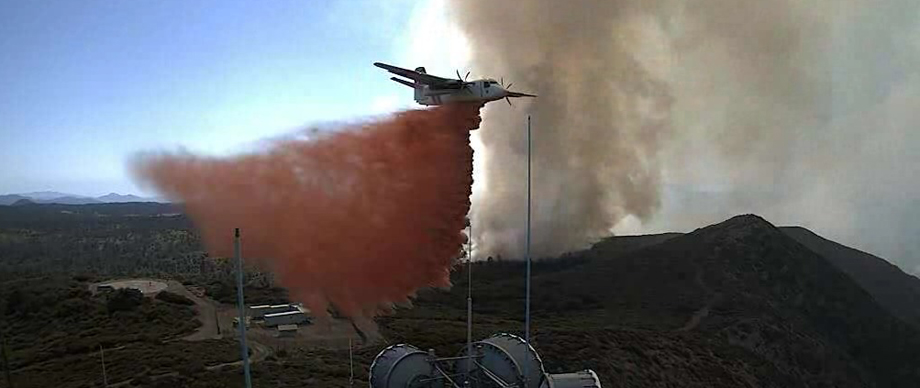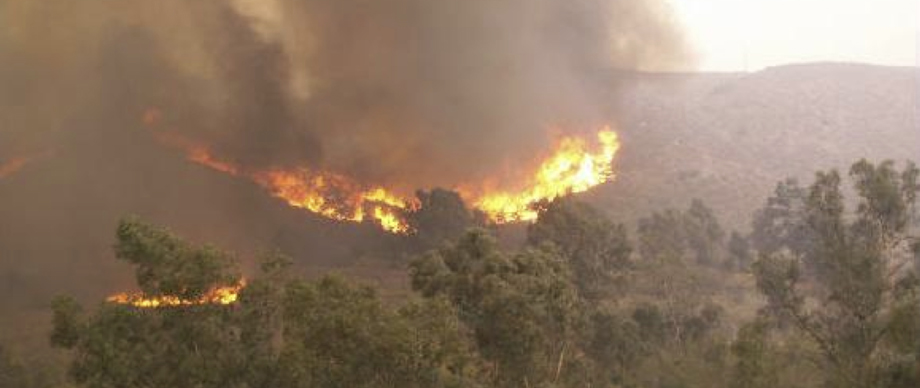WIFIRE Helps Firefighters Get Jump on Wildfires
San Diego, July 30, 2014 — In recent years, the number and scale of wildfires in the U.S. has risen, threatening cities and forests, and forcing large-scale evacuations. Now, after announcing a multi-year, $2.65 million grant to the University of California, San Diego and the University of Maryland, the National Science Foundation (NSF) has posted a video about the project on its Science Nation online network. [Click here to watch the NSF video.]

The project, called WIFIRE, started in October 2013 and is already proving its worth as it builds a cyberinfra-structure to better monitor, predict and mitigate wildfires in the future. Participants include researchers from the San Diego Supercomputer Center (SDSC), the California Institute for Telecommunications and Information Technology’s (Calit2) Qualcomm Institute, and the Mechanical and Aerospace Engineering (MAE) department at the university’s Jacobs School of Engineering. Also participating in the project is the University of Maryland’s Department of Fire Protection Engineering.
WIFIRE is supporting an integrated system for wildfire analysis, with specific regard to changing urban dynamics and climate. The system will integrate networked observations such as heterogeneous satellite data and real-time remote sensor data, with computational techniques in signal processing, visualization, modeling, and data assimilation to provide a scalable method to monitor such phenomena as weather patterns that can help predict a wildfire's rate of spread. The project is part of the NSF Hazards SEES program, which enhances sustainability through the use of advanced technologies and new methods.
“WIFIRE will be scalable to users with different skill-levels using specialized web interfaces and user-specified alerts for environmental events broadcasted to receivers before, during, and after a wildfire,” said Ilkay Altintas, principal investigator for the WIFIRE project and SDSC’s deputy coordinator for research. “This approach allows many sensors to be subjected to user-specified data processing algorithms to generate threshold alerts within seconds. Integration of this sensor data into both rapidly available fire image data and models will better enable situational awareness, responses and decision support at local, state, national, and international levels.”
High-Speed Wireless Grid
The WIFIRE encompasses the remote sensor network that is currently part of the High Performance Wireless Research and Education Network (HPWREN) project started at SDSC under NSF funding in 2000. HPWREN Director and co-founder Hans-Werner Braun is a co-PI of WIFIRE, in addition to Larry Smarr, founding director of Calit2; and MAE Professor Raymond de Callafon.
“San Diego County is already well positioned to monitor and analyze these dynamics through sensors within and outside of our research networks,” said Braun, who has been working with industry and government officials to expand the Area Situational Awareness for Public Safety Network (ASAPnet), a grid of high-speed, wireless communications connecting 60 backcountry fire stations in the region. “We have been collecting environmental data for more than 10 years through HPWREN, merging large volumes of data and computational models into sophisticated visualizations, and have forged new networks through government and industry partners including CAL FIRE, the U.S. Forest Service, San Diego Gas & Electric (SDG&E), and the San Diego County Emergency Operations Center to direct and share our research.”

According to Calit2’s Smarr, WIFIRE is a logical progression for Calit2 and its partners in the fight against wildfires. “We are all based in southern California and wildfires represent one of the most intractable environmental threats we face on a regular basis,” he said. “I am convinced that the technology we deploy for WIFIRE will make a substantial difference in our ability to detect, track, and respond to wildfires going forward.”
Networked weather stations that currently monitor wind speed, temperature, and humidity provide extremely valuable information on the potential risk of a wildfire. In case a wildfire does emerge, the WIFIRE cyberinfrastructure leverages the availability of networked environmental data to monitor and predict its dynamic behavior.
“Real-time measurements on the areal location of a wildfire and current wind speeds can be combined with topography information to estimate and update information on fuel content and the rate of spread (ROS) of the wildfire,” said Raymond de Callafon, a professor with MAE, and director of the System Identification and Control Laboratory at UC San Diego. “Monitoring and predicting the ROS is possible by combining signal processing, parameter estimation, and dynamic wildfire models to update the state of the wildfire in real-time. WIFIRE combines the unique research expertise on signal processing and parameter estimation at MAE with wildfire modeling and state estimation at the University of Maryland’s Department of Fire Protection Engineering.”
The products of WIFIRE are being shared with project collaborators including CAL FIRE, the U.S. Forest Service, and SDG&E. WIFIRE will be available for use by government agencies in the future to save lives and property during wildfire events, test the effectiveness of response and evacuation scenarios before they occur, and assess the effectiveness of high-density sensor networks in improving fire and weather predictions.

“The results and findings of WIFIRE will advance the understanding of the fundamental processes that influence wildfire hazards, and will be transferable to other national and global regions where wildfires occur frequently,” said Altintas. “Proposed solutions will be readily available and transferable through the open-source Kepler workflows and web servers, as UC San Diego has done for data sharing during past disasters such as the 2010 Haiti earthquake and the 2011 tsunami and earthquake in Japan.”
Additionally, WIFIRE’s open-source environment and intuitive workflows that lead to reusable software components for a wide range of science and engineering disciplines can be extended to the education community. “This will make it possible for students from the high school to graduate level to participate in uploading their own data logging, data processing or data-driven alerts,” said Altintas.
The WIFIRE project is funded under NSF award no. 1331615. The Twitter account for WIFIRE is @WIFIREProject.
Related Links
NSF Science Nation WIFIRE video
Media Contacts
Doug Ramsey, (858) 822-5825, dramsey@ucsd.edu
Jan Zverina, jzverina@sdsc.edu
